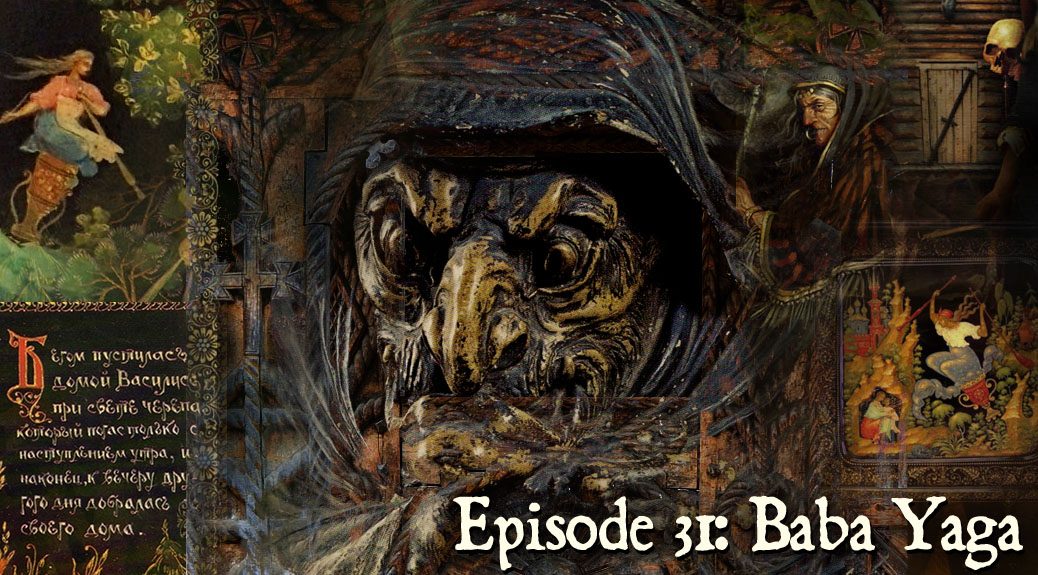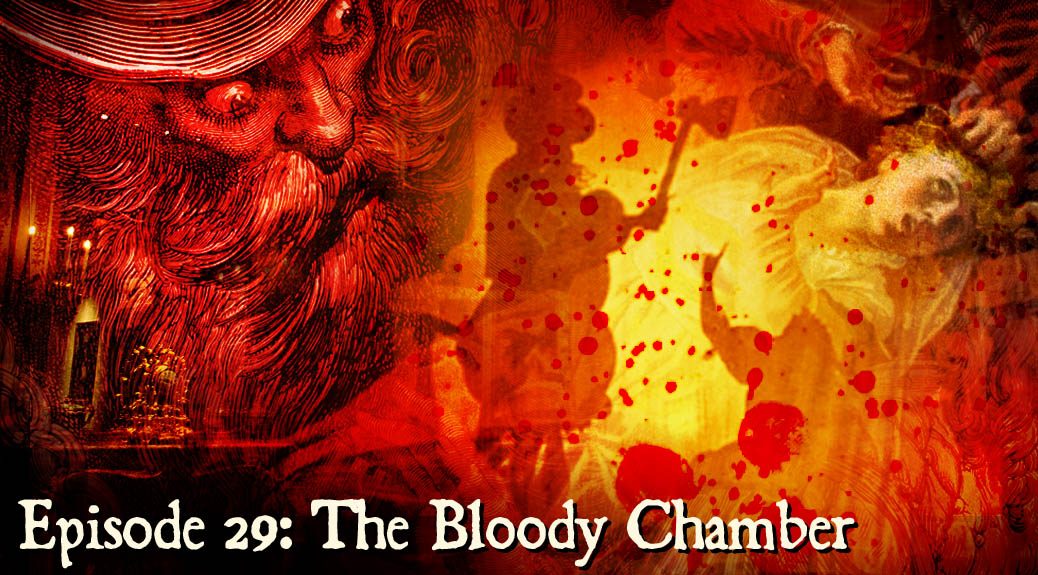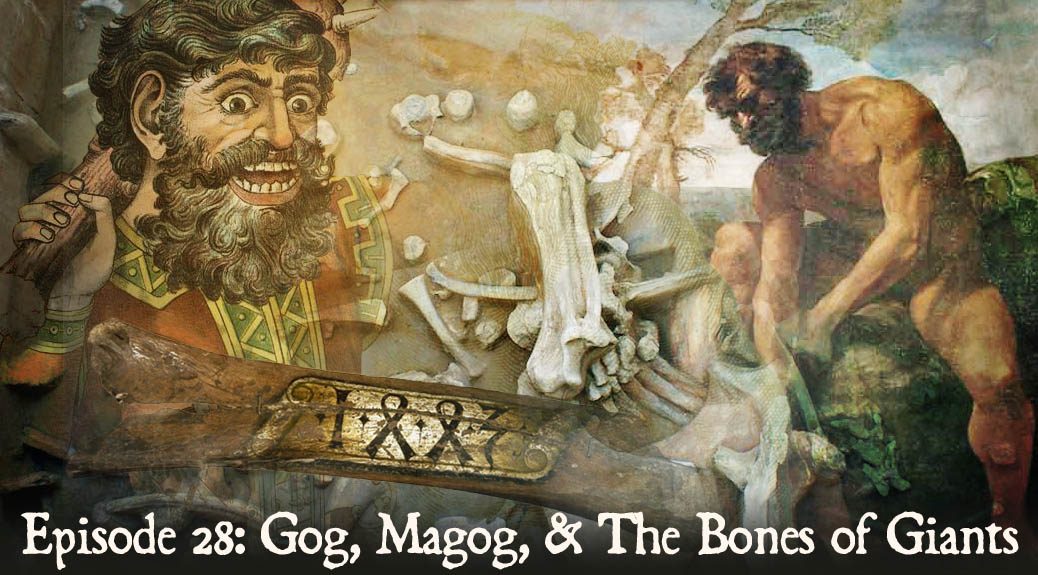
#31 Baba Yaga
Podcast: Play in new window | Download (Duration: 42:46 — 39.2MB)
Subscribe: Apple Podcasts | Spotify | Android | Podchaser | RSS | More
This episode explores the Russian witch, the Baba Yaga, tales in which she appears, possible origins, and regional variations on the character.
We begin by retelling one of the skazi (folk tales) in which she’s particularly well-definined, “Vasilisa the Beautiful,” a version recorded in the mid-1800s by the folklorist Alexander Afanasyev, Russia’s answer to the Brothers Grimm, .

Without spoiling the story, I can say that it bears some parallels to “Cinderella,” with a wicked stepmother and step-sisters grievously imposing on the young Vasilisa and sending her into an encounter with the Baba Yaga. She is aided in the tale by a magic doll bequeathed her by her dying mother.
Like nearly all Baba Yaga stories, this tale features the witch’s famous house perched atop two immense chicken legs on which it turns to reveal it’s entrance if the proper spell is spoken. Around the house, in this story as in most others, is a fence made of human bones and topped by skulls.

The witch herself is not much described in the text of “Vasilisa,” but in the folklore of the Eastern Slavs, she is generally imagined as an hunchbacked old crone, usually large, and with a large nose, sometimes said to be of iron, as are her teeth sometimes. She’s also occasionally described as an ogress because of her nasty habit of eating visitors, especially children, or those who fail her when she puts them to work (what she often does with visitors).

“Vasilisa” like nearly every other tale featuring the character, describes the witch flying through the skies in mortar, which she steers with the pestle, an instrument sometimes also used as a club or magic wand. Like western witches, she is often depicted with a cat, but the Baba Yaga may also command a pack of dogs, flock of geese or swans, or even be served by pairs of disembodied hands.
“Baba Yaga” is not quite a proper noun, i.e., her “name,” at least not quite. It’s a class or type of character, and certain stories feature multiple Baba Yagas. For this reason too, she may be killed off in a particular story — and often is — only to reappear as presumably different witch in another.
Though she’s most often portrayed as malevolent and dangerous, some tales make her more ambivalent, or occasionally even helpful. We have a look at the best known examples of this, “The Frog Tzarina” (a story offering a sort of reversal on the “Frog Prince” theme) .

Of the tales that feature the Baba Yaga in a more menacing role, one of the better known is called “Princess Marya” or “The Death of Koschei the Deathless,” and it features the witch as a character somewhat peripheral to another important character of Russian folklore, Koschei. He’s a sorcerer, usually represented as a crowned skeletal figure and known for hiding his soul in the form of a needle within an egg within a duck. We also hear a bit of another tale featuring a malevolent Baba Yaga, “Little Bear’s-Son,” in which the witch lives in an underworld and battles the titlular character and a trio of giants.
Our quick look at a few examples of the Baba Yaga in music and films includes a piece from Modest Mussorgsky’s 1874 suite Pictures at an Exhibition called “The Baba yaga” or “The Hut on Fowl’s Legs” (Here is the Baba Yaga inspired clock design by Victor Hartmann that inspired the piece.) We hear a bit from that and a snippet of “Baba Yaga,” a 1965 garage-rock number by a Minnesota band called The Pagans. Speaking of music, our show, opened with a clip from a 1997 track “Baba Yaga” by the Australian singer, Judy Small. Also used in this episode are two other traditional pieces of music, “Doina Oltului” (instrumental) and “Khorovod,” an example of ancient pagan round dance music of the Slavs.
Probably the greatest modern popularizer of the figure and huge influence upon how the Baba Yaga is imagined in Russia today is work of filmmaker, Alexander Rou featuring the actor Georgy Millyar. Beginning in 1939, with a version of “The Frog Tsarina,” and running up to 1972, the year before he died, Rou made over a dozen film inspired by Russian fairy tales.The Baba Yaga appearing in many of these was always portrayed by the cross-dressed Millyar, whose comic performances are one of many reasons to seek out Rou’s films on YouTube.

While the first mention of the Baba Yaga in print only appears in a 1755 book called Russian Grammar, it’s presumed the figure comes from much older mythology. In fact, while the reference in question, though vague, includes her in a list of Slavic deities. References to the witch’s control over horsemen representing the sun in “Vasilisa the Beautiful,” for instance, have suggested a possible origin in a solar deity. More likely, given her association with bones and her menacing nature, would be a connection with Marena, the Eastern Slavic goddess of death and winter. The witch’s flights in her mortar, always accompanied by terrible winds, have also suggested connections to the aerial phantoms of what’s called The Wild Hunt in Europe. Similarly her presence in the sky has suggested a connections with the Fiery Serpent, a figure of Eastern Slavic folklore, often represented by aerial phenomena such as lightning or meteors. All ideas to chew on. Nothing definitive, though the strongest association would seem to be with Marena.
We close the show with two tales from our own times, in which the Baba Yaga’s namesake or likeness is responsible for some dreadful deeds.

Bone and Sickle is happy to welcome Sarah Chavez as a new voice in the show this week.








